Introduction
Specifications and Features
Announced towards the end of August this year, the Canon EF 35mm f/1.4L II USM is the long-awaited update to the highly-regarded original model from 1998. Where the earlier model had just the one aspherical surface in its 11-element design (albeit with a highly desirable floating system), this second generation model has two aspheres and adds two UD glass elements. In addition, this lens debuts what Canon is calling Blue Spectrum Refractive (BR) optics. Although Canon remains tight-lipped, the company has stated that BR is a composite of organic material sandwiched between two glass elements. The new tech has been specifically introduced to counter the refractioneffects of the shorter wavelengths of light that result in the blue fringing seen in longitudinal chromatic aberration.
The new lens has sub-wavelength and fluorine coatings, a rounded iris with 9 blades, and weatherproof construction. And as with previous models, it has a sonic-type AF motor with what Canon calls full-time manual override. It has a minimum focus distance of 11” (28cm) and large a 72mm filter diameter. The lens measures 3.17 x 4.15” (87.6 x 105.5mm) and weighs 1.67 lb (760g). It is available for pre-order at around $1799 (USD).
Good uniformity and low CA
With a DxO Mark lens score of 33 points, the new model is very good performer, although peak sharpness levels are perhaps a little lower than expected, given the 22-Mpix sensor of the Canon EOS 5D Mark III. Nevertheless, the performance is very strong across the field.
Lenses like this typically have high sharpness centrally but are weak in the borders and corners. This lens has a relatively flat field and very low astigmatism, both of which contribute to improved imaging performance in the outer field. Chromatic aberration (limited to lateral rather than longitudinal in our metrics) is impressively low, as is distortion — there’s just a hint of barrelling in test shots.
However, the transmission at T1.7 is 0.5 EV lower than the stated aperture value, and its relatively high vignetting is much the same as the original model.
Canon EF 35mm f/1.4L II USM versus Canon EF 35mm f/1.4L USM versus Canon EF 35mm f/2 IS USM: Excellent optical quality
Compared with its predecessor, the new model is an improvement optically. It has higher levels of peak sharpness, better uniformity, lower distortion and greatly reduced chromatic aberration.
It is also sharper wide-open, with less field curvature and improved performance in the edges and corners.
While the 35mm f/2 has slightly higher peak sharpness, the new 35mm f1/.4 is sharper across the image field wide-open than the 35mm f/2 is at its initial aperture. It’s really only at f/2.8 onwards that the slower model has slightly higher center sharpness (which accounts for the higher peak sharpness results), but what’s so good about the new lens is its uniformity. It has low levels of astigmatism, and this greatly improves the imaging performance in the outer field.
Canon EF 35mm f/1.4L II USM versus Carl Zeiss Distagon T 35mm f/1.4 ZE Canon versus Sigma 35mm F1.4 DG HSM A Canon: Excellent performance wide open
The Canon is up against two very highly-regarded high-speed models from Zeiss and Sigma. The Zeiss is manual focus only, but it retains the fully electronic mount required by EOS bodies, and it’s made to a very high standard inside and out. However, while the Zeiss has similar peak sharpness levels, it is less impressive wide-open.
The Zeiss is well-corrected for lateral chromatic aberration, but sharpness is restricted to a small central core. Sharpness across the field improves dramatically at f/2 and extends to the edges and corners by f/2.8, but it can’t quite match the Canon until f/4-5.6. Even then, the Zeiss exhibits a small amount of astigmatism, though that’s minimal at f/5.6 and above.
The Sigma deserves respect for its excellent imaging performance wide-open. Indeed, it was this model that redefined what was possible with high-speed primes. However, if Canon introduced this model to out-do the Sigma wide-open, then it has succeeded. The Canon is the better performer of the two at the initial aperture: it’s marginally sharper centrally, but most gains are in the outer image field where it’s most difficult to make improvements. That’s impressive. At all other apertures the Sigma is sharper centrally, but not by much, and it is not until f/5.6 that the Sigma can claim to improve on the Canon’s uniformity and sharpness across the frame. And let’s not forget just how well the Canon is corrected for lateral chromatic aberration, though in fairness it’s also very low in the Sigma.
Conclusion
With the introduction of high-resolution bodies such as the Canon EOS 5Ds and 5DsR, with their ability to highlight lens flaws, it comes as little surprise to see Canon roll out new versions of some of the older models in their line-up. The original 35mm f/1.4 wasn’t a bad performer, but it was beginning to show its age. The new model greatly surpasses the original in several key areas. It is generally sharper, but it’s the improvement in geometry and uniformity that really impresses. Not only does it have low field curvature and astigmatism, but Canon has also dramatically lowered lateral chromatic aberration, with the overall effect of greatly improving imaging performance in the outer field (where the older model was weak). The new Canon even outperforms the highly-regarded Sigma for uniformity at wider apertures — however, the Sigma remains much more accessible. At $1799, the Canon certainly isn’t cheap, but over the long term it should prove to be a good value.


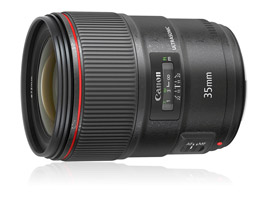


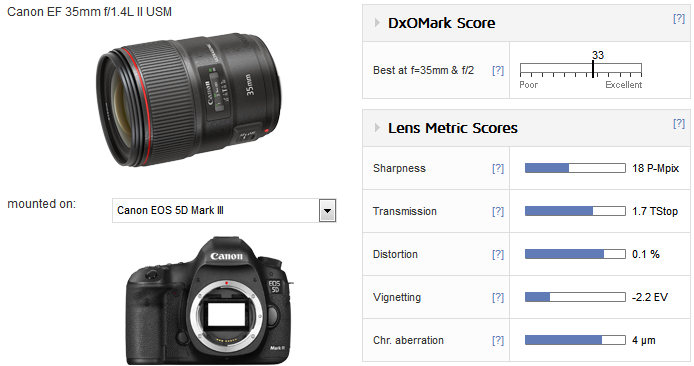
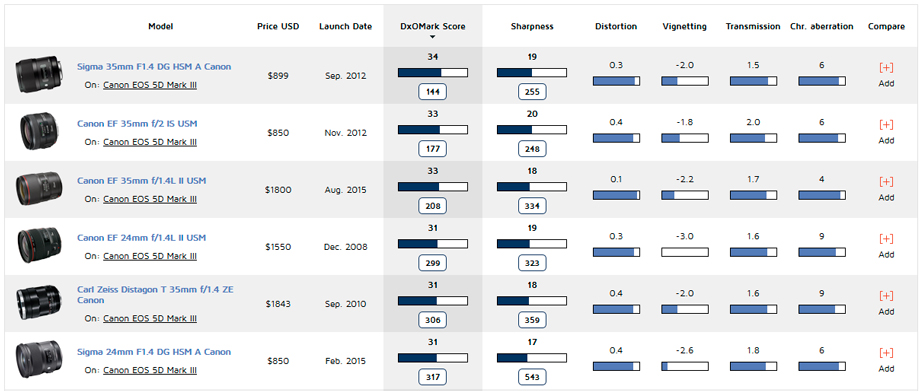
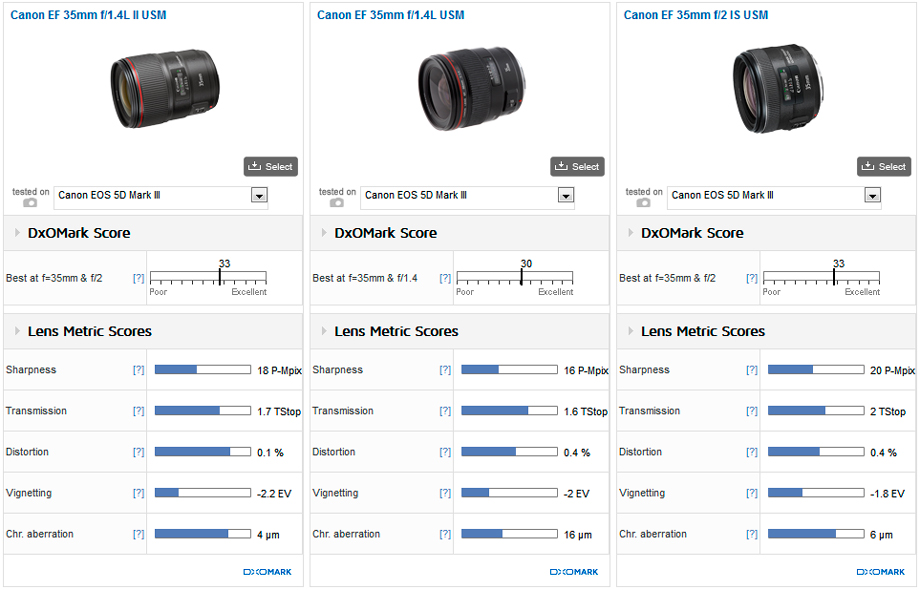
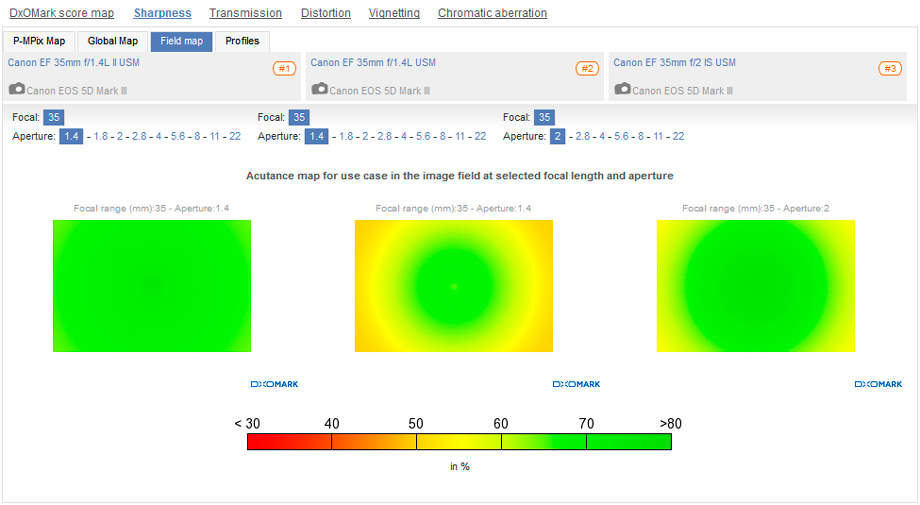
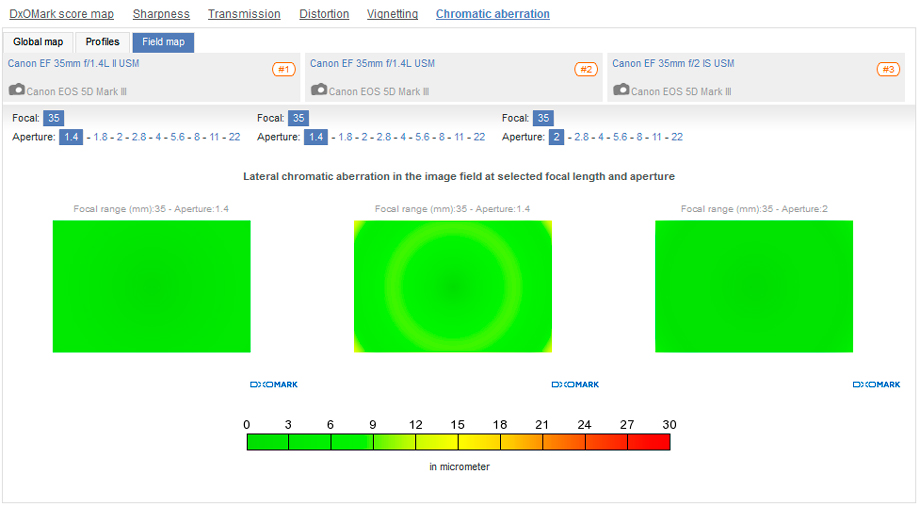
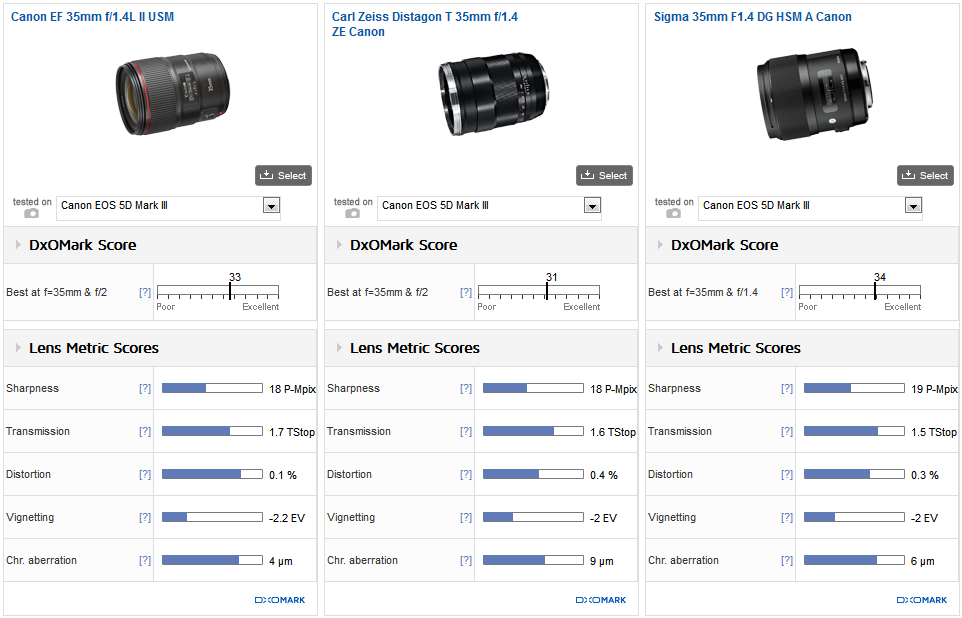
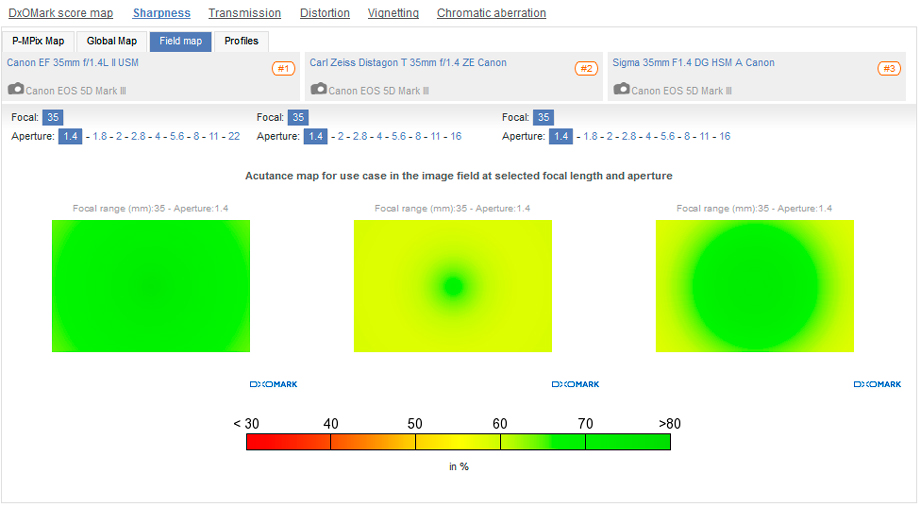
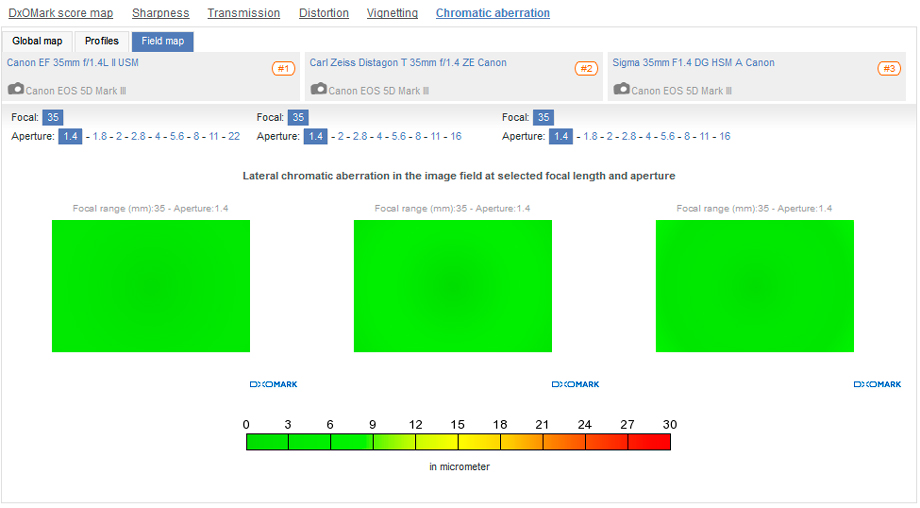
DXOMARK encourages its readers to share comments on the articles. To read or post comments, Disqus cookies are required. Change your Cookies Preferences and read more about our Comment Policy.